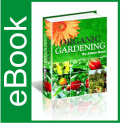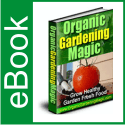how to plant a garden
how to plant a garden
Article by Tracy Ballisager
Are you curious about how to plant a garden? The process itself is not difficult, as long as you have a basic idea of what you need in order to get started. Before you begin planting a garden, it is vital that you have prepared the soil correctly. This means is that you need to use a tiller or your hands to loosen the soil, which will allow for proper aeration. You should also use fertilizer and new topsoil in order to properly soften the soil. Before you do any planting in the spring, you should lightly till your soil to kill off any weeds and to make sure that the soil is nice and smooth for your planting. Learning how to plant a garden is not difficult at all, but there is a process that you need to be aware of for the best results.
Correctly tilling your soil is an important part of learning how to plant a garden. This will enhance how easily your garden will absorb water, which is a vital part of correctly gardening. Once the soil is ready, you can begin the planting process. When spring has nearly arrived, it is time to prepare for the digging and planting parts of gardening. The first thing that you should be aware of if flowers play a part in learning how to plant a garden is that you need to know the difference been annuals and perennials. Annual plants and flowers must be planted every year, but they bloom all throughout the entire summer. On the other hand, perennials naturally come back every year and do not need to be replanted, but their blooming span is a lot shorter as a result.
Another important part of learning how to plant a garden is recognizing which plants are best suited for your soil region and climate. You need to be aware of how much sunlight your garden is receiving, and you need to choose plants that will work well with that amount of sunlight and nothing more or less. If you are looking for hearty flowers and plants that will work well no matter where they are planted, some of the options that you have available to you are impatiens, zinnias, and marigolds, all of which are annuals. If late frosts are common in your region, then you should absolutely not do any planting until this danger has passed, because you can kill your flowers off quickly if you are not careful.
When learning how to plant a garden, if you are worried about frost, you my consider growing your seedling plants indoors in a sunny window or under an artificial growing light. This way, you can avoid the frost and can better tend to your small plants, keeping them moist but warm and in the right amount of light until the climate outdoors is right for them to thrive. Your seedlings should be kept moist at all times but never actually wet, and they should never be allowed to dry out completely. You should aim for a watering every other day, then cutting back on the watering once they have grown larger. The next step in learning how to plant a garden is transplanting your seedlings outdoors once they have grown large enough to thrive on their own. Once your plants are moved out doors, aim for watering in the morning so that there is less evaporation to contend with from the heat during the day.
About the Author
Tracy Ballisager is a stay at home mum. To read more on gardening tips go to http://www.gardening-tips-idea.com

 December 7, 2011
December 7, 2011 







